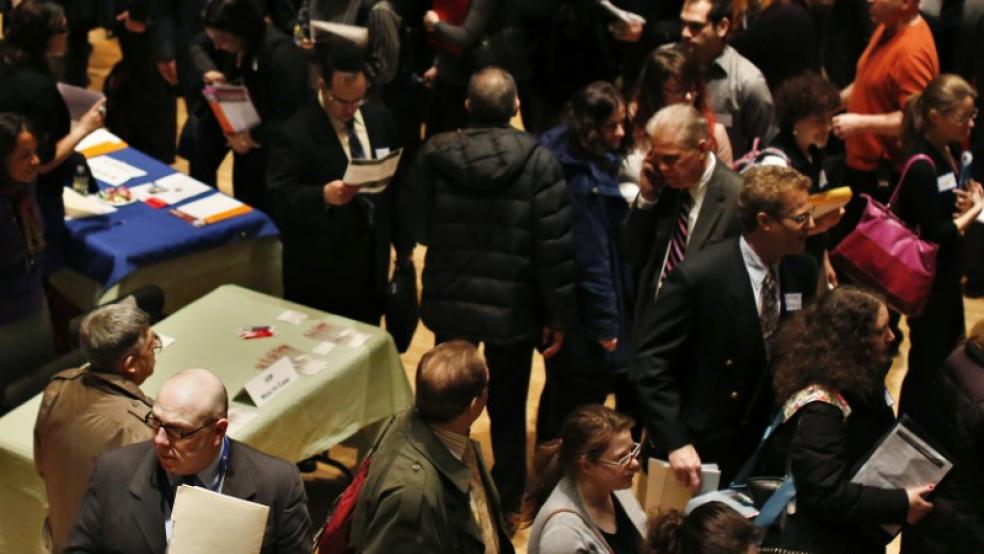It's already been a difficult 2016 for investors — the S&P 500 is down about 5.1 percent since the start of the year — but if history is any indication, it's not going to get any better. Why? Because markets tend to fall in the last year of a president's second term.
Since 1900, the S&P 500 has, on average, fallen by 1.2 percent in year 8, with the market rising only 44 percent of the time. The worst drop was in George W. Bush's last term, in 2008, when the market fell by about 41 percent.
Related: Are These the Death Throes of the Seven-Year Bull Market?
While there are plenty of reasons why equities may struggle this year, such as falling oil prices and slowing global growth, election-related uncertainty isn't helping, said Jeff Hirsch, editor in chief of the "Stock Trader's Almanac," a popular investment newsletter.
Come November, America will have a new president, but who that will be is still very much to be determined. That lack of clarity isn't good for the markets. "People don't like the upheaval and uncertainty of an open-ended race," he explained.
As well, presidents who are in the final year of a second term are often less predictable than they are in previous years, which adds to the uncertainty. They're "lame duck presidents," said Hirsch, "with little political capital left, so they push through policy initiatives by executive orders and any other means possible."
This stands in contrast to the final year of a president's first term. Since incumbents are generally reelected, markets don't panic nearly as much. Since 1900, the S&P 500 has gained an average of 11.5 percent and has risen 83 percent of the time in year 4, said Sam Stovall, managing director of U.S. equity strategy for S&P Capital IQ.
Related: Here’s What You Should Do When the Stock Market Falls
Pay attention in August
There is a chance that the year won't end up as badly as in the past, but it depends on who investors think will win the election.
If stocks rise between July 31 and October 31, then people are generally of the mind that the incumbent party will win. If equities fall, then the thinking is that a new party will take over, said Stovall. Again, it relates to uncertainty — as the saying goes, better the devil you know than the devil you don't.
This actually plays out in the polls, said Stovall. In 82 percent of the times that markets have climbed during August and October, the incumbent party has won. In 86 percent of the times the market has been down, the replacement party has won.
Related: Soros Warns We May Be Repeating 2008 Crisis
Individual sectors could also experience more ups and downs in the run-up to the election. Once candidates are chosen and party platforms are revealed, investors will have a better sense as to what industries might either benefit or suffer, depending on who's elected.
While those platforms are still to be determined, Stovall pointed out that an industry such as coal, which recorded a near 80 percent price decline in 2015, could see a rebound if investors think that the Republicans, which tend to favor less stringent air-quality regulations, will take the White House.
On the other hand, U.S-based pharmaceutical companies could see prices fall if Democrats, which have said that they want to cap drug pricing, remain in office. "The markets will give a bit of clarity to the polls," said Stovall.
Still sluggish in 2017
Unfortunately, don't expect 2017 to be a whole lot better. While investors won't have to guess who will be in power, a president's first year is often as unpredictable as the last, writes Peter Lee, an analyst with UBS, in a 2013 paper on the Presidential Election Cycle Theory.
Related: Why the New Year's Selloff Is So Scary
Since 1929, the S&P 500 has achieved, on average, a mere 1.58 percent gain in a president's first year in office. During that first year, or the "honeymoon period," as Lee calls it, when Americans are optimistic about their new leader, the president feels as though he has more leeway to push through less favorable policies.
"Policymakers begin to feel less restrained about introducing new policies and programs, which at times may be restrictive and unpopular with voters," he writes. "As these new programs, usually involving higher taxes, more spending and more regulation are implemented, it begins to negatively impact business profits and consumers."
It's in the third year — after the midterm elections — where the markets start to really improve. According to Lee, since 1939, there has never been a down year in the third year of a four-year term, with the S&P 500 up, on average, by 5.5 percent.
Don’t take risks
With the presidential election cycle theory pointing to a sluggish year in 2016, coupled with other issues, like oil and global growth, investors need to remain cautious, said Hirsch. Own defensive stocks and don't do anything drastic, he said.
"Investors need to evaluate things much more carefully," he said. "You don't want to be dumping a whole lot of money into the market, but you want to see where things end up."
Stovall agrees, saying that now's not the time for people to go too far out on the risk curve. Not only that, but we're almost seven years into the current bull market, he said, and only two of 11 bull markets since 2011 have gone into their seventh year.
If investors should do anything, it's stock upon tissues.
This article originally appeared on CNBC. Read more from CNBC:
Banks’ falling book value could invite activists




